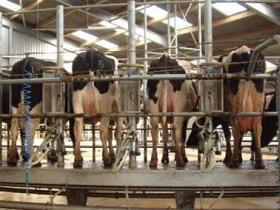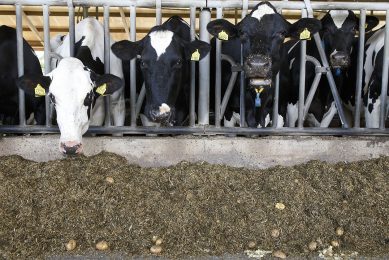Research: Diet type and selenium content of milk

Australian scientists tested the hypothesis that the concentration of Se in milk would depend on the amount of Se consumed, when the Se is primarily organic in nature, regardless of the diet of the cows.
Seventy multiparous Holstein-Friesian cows were fed different amounts of pasture and concentrates, or a total mixed ration (TMR), for 42 d in mid-lactation.
Of the 70 cows, 60 grazed irrigated perennial pasture at daily allowances of either 20 or 40 kg of dry matter (DM)/cow.
These cows received 1 of 3 amounts of concentrates, either 1, 3, or 6 kg of DM/cow per day of pellets, and at each level of concentrate feeding, the pellets were formulated to provide 1 of 2 quantities of Se from Se yeast, either about 16 or 32 mg of Se/d.
The other 10 cows were included in 2 additional treatments where a TMR diet was supplemented with 1 kg of DM/d of pellets formulated to include 1 of the 2 quantities of supplemental Se.
Total Se intakes ranged from 14.5 to 35.9 mg/d, and of this, the Se-enriched pellets provided 93, 91, and 72% of the Se for cows allocated 20 and 40 kg of pasture DM/d or the TMR, respectively.
Results
No effects of the amount of Se consumed on any milk production variable, or on somatic cell count, body weight, and body condition score, for either the pasture-fed or TMR-fed cows were found.
Milk Se concentrations responded quickly to the commencement of Se supplementation, reaching 89% of steady state levels at day 5.
When milk Se concentrations were at steady state (d 12 to 40), each 1 mg of Se eaten increased the Se concentration of milk by 5.0 μg/kg, and this response did not seem to be affected by the diet of the cows or their milk production.
The concentration of Se in whole blood was more variable than that in milk, and took much longer to respond to change in Se status, but it was not affected by diet at any time either.
In conclusion
For the on-farm production of Se-enriched milk, it is important to be able to predict milk Se concentration from Se input. In our study, type of diet did not affect this relationship.
References and further reading may be available for this article. To view references and further reading you must purchase this article.











